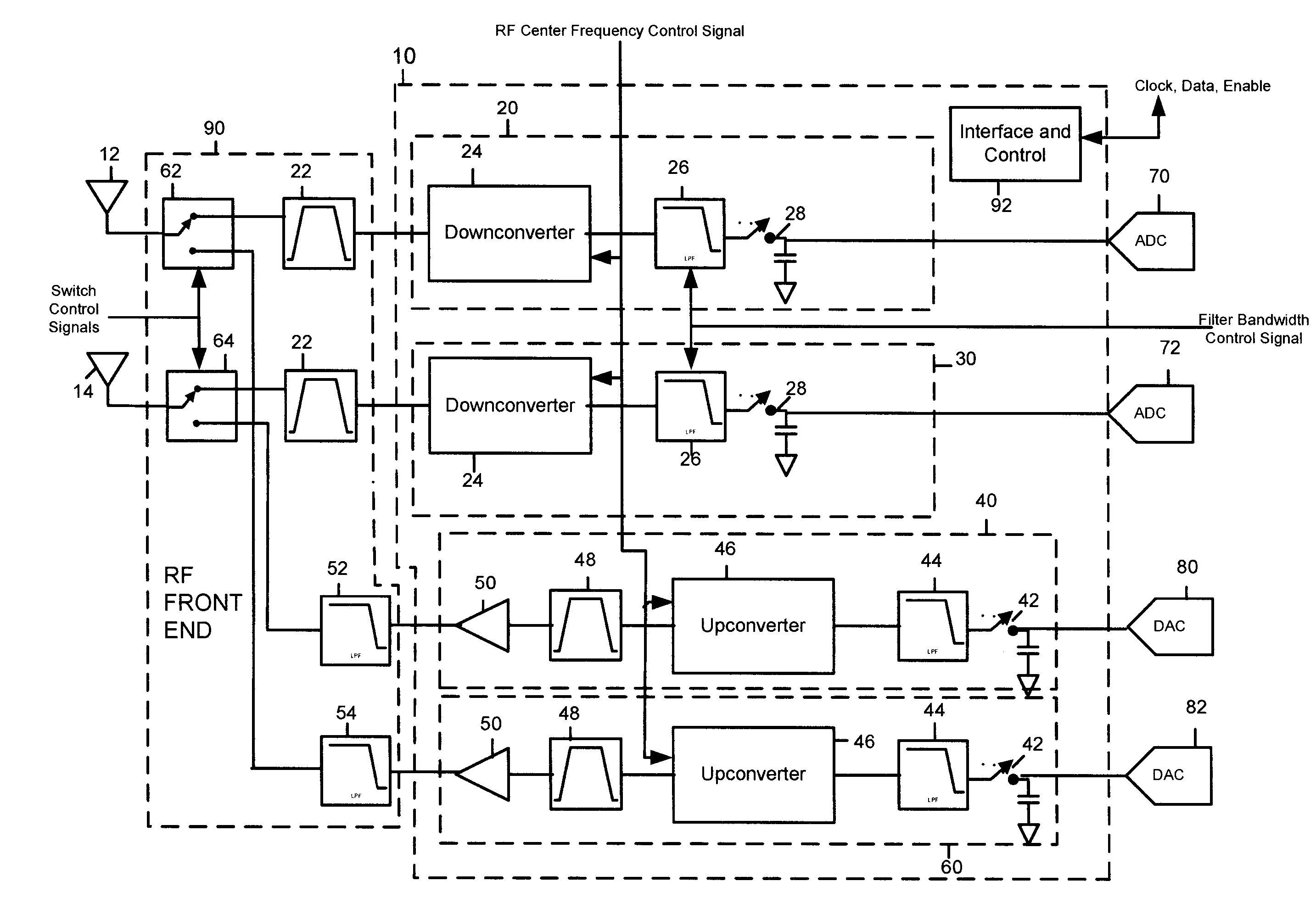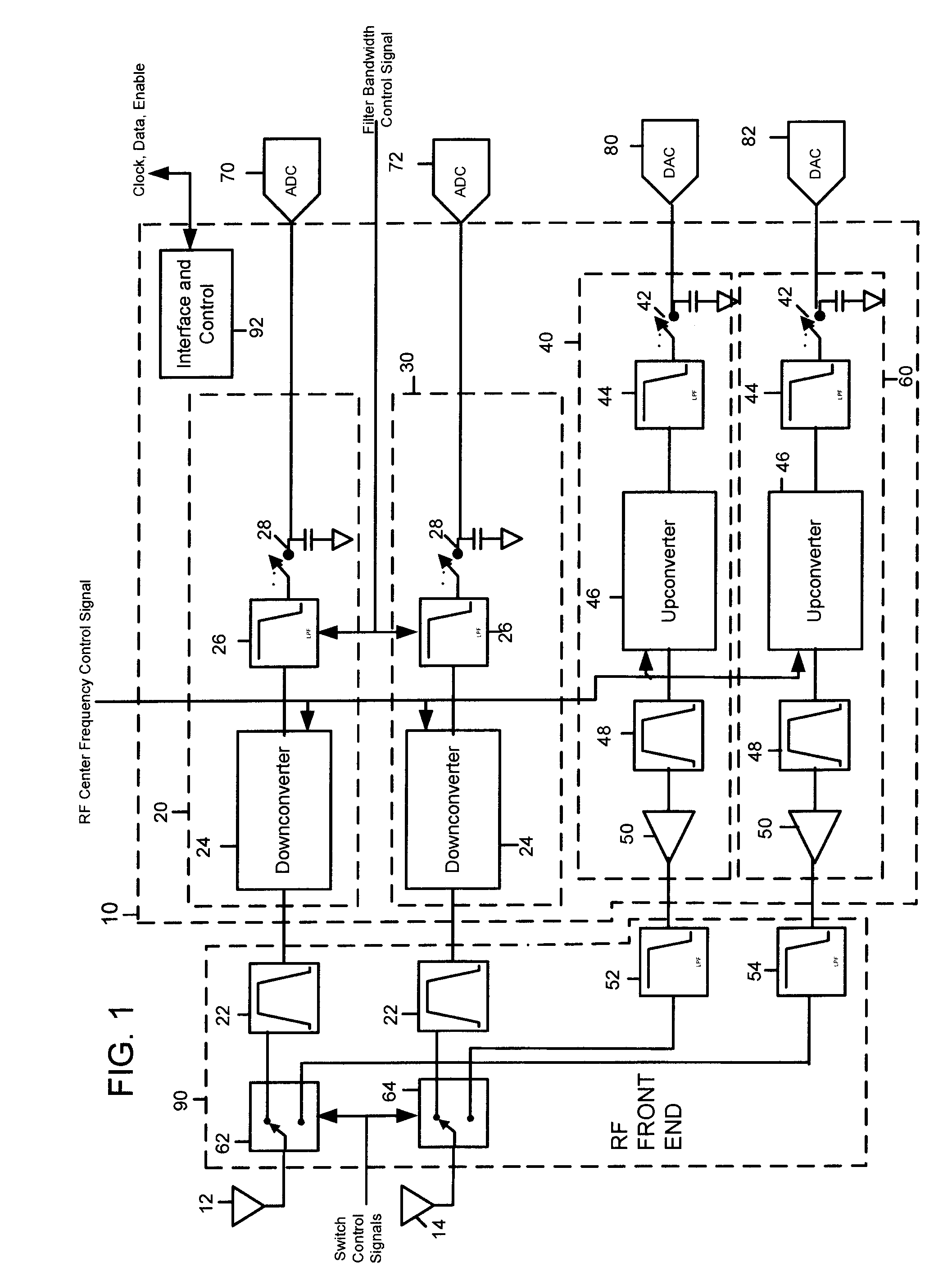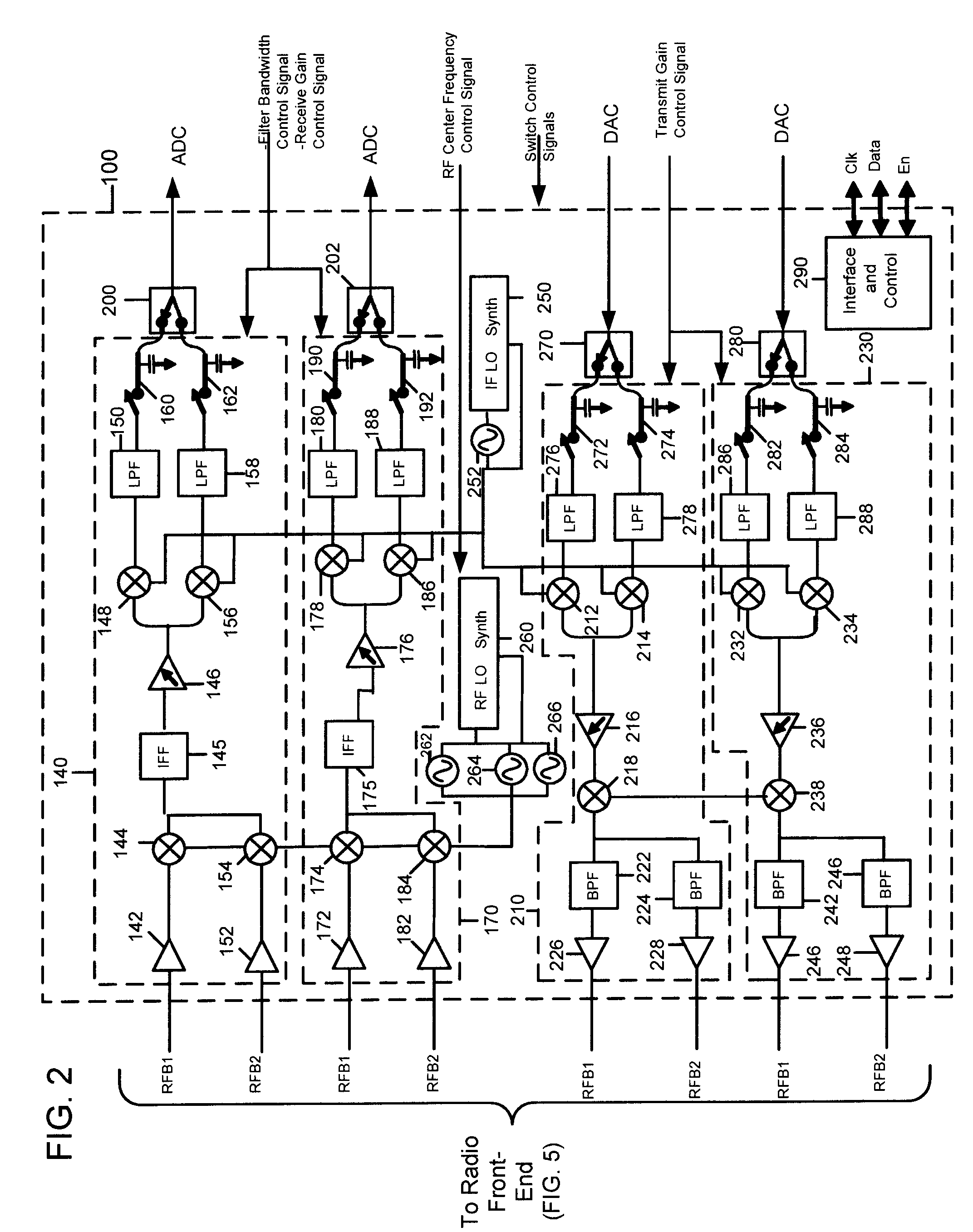Multiple-Input Multiple-Output Radio Transceiver
- Summary
- Abstract
- Description
- Claims
- Application Information
AI Technical Summary
Benefits of technology
Problems solved by technology
Method used
Image
Examples
Embodiment Construction
[0025] FIG. 1 shows a block diagram of a radio transceiver 10. The radio transceiver 10 is suitable for processing radio frequency signals detected by at least two antennas. The foregoing description is directed to an embodiment with two antennas 12 and 14, and an associated transmit and receive path for each, but this same architecture can be generalized to support in general N processing paths for N-antennas. This radio transceiver architecture is useful to support the aforementioned CBF techniques. CBF systems and methods are described in U.S. Patent Application No. 10 / 164,728, filed June 19, 2002 entitled "System and Method for Antenna Diversity Scheme Using Joint Maximal Ratio Combining"; U.S. Patent Application No. 10 / 174,689, filed June 19, 2002, entitled "System and Method for Antenna Diversity Using Equal Gain Joint Maximal Ratio Combining"; and U.S. Patent Application No. 10 / 064,482, filed July 18, 2002 entitled "System and Method for Joint Maximal Ratio Combining Using Ti...
PUM
 Login to View More
Login to View More Abstract
Description
Claims
Application Information
 Login to View More
Login to View More - R&D
- Intellectual Property
- Life Sciences
- Materials
- Tech Scout
- Unparalleled Data Quality
- Higher Quality Content
- 60% Fewer Hallucinations
Browse by: Latest US Patents, China's latest patents, Technical Efficacy Thesaurus, Application Domain, Technology Topic, Popular Technical Reports.
© 2025 PatSnap. All rights reserved.Legal|Privacy policy|Modern Slavery Act Transparency Statement|Sitemap|About US| Contact US: help@patsnap.com



